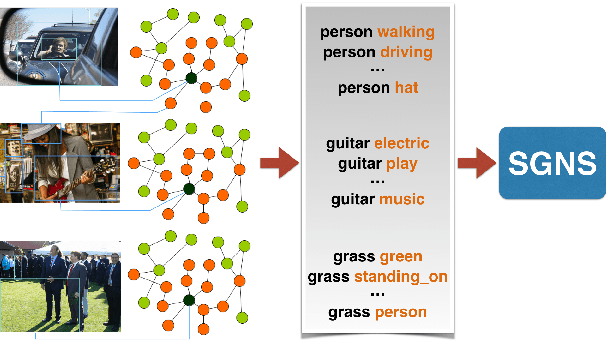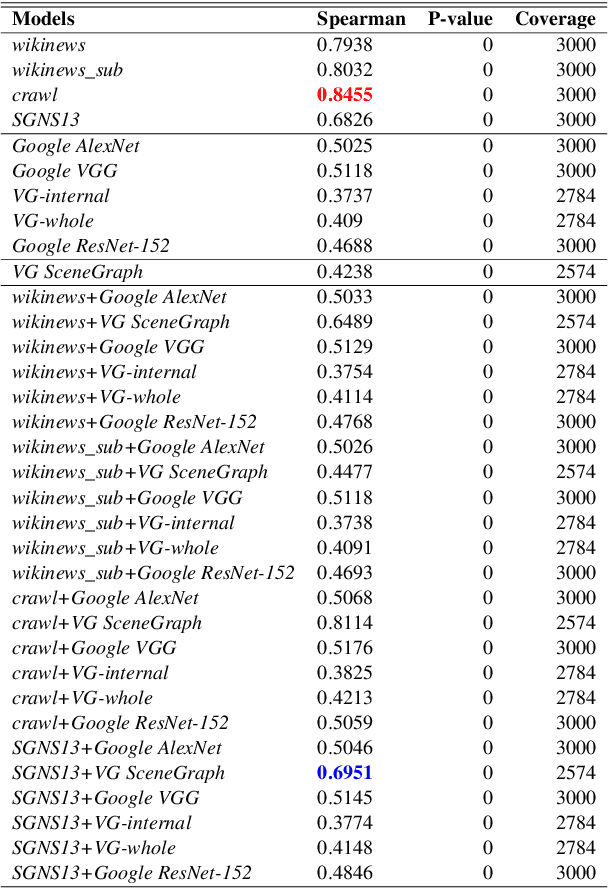Efficient Multi-Modal Embeddings from Structured Data
Paper and Code
Oct 06, 2021



Multi-modal word semantics aims to enhance embeddings with perceptual input, assuming that human meaning representation is grounded in sensory experience. Most research focuses on evaluation involving direct visual input, however, visual grounding can contribute to linguistic applications as well. Another motivation for this paper is the growing need for more interpretable models and for evaluating model efficiency regarding size and performance. This work explores the impact of visual information for semantics when the evaluation involves no direct visual input, specifically semantic similarity and relatedness. We investigate a new embedding type in-between linguistic and visual modalities, based on the structured annotations of Visual Genome. We compare uni- and multi-modal models including structured, linguistic and image based representations. We measure the efficiency of each model with regard to data and model size, modality / data distribution and information gain. The analysis includes an interpretation of embedding structures. We found that this new embedding conveys complementary information for text based embeddings. It achieves comparable performance in an economic way, using orders of magnitude less resources than visual models.
 Add to Chrome
Add to Chrome Add to Firefox
Add to Firefox Add to Edge
Add to Edge